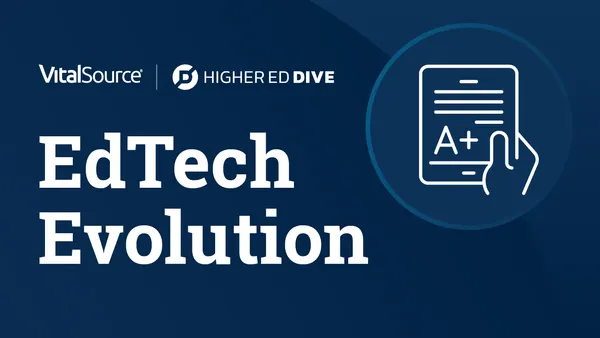Dive Brief:
-
Zovio, a for-profit college operator turned educational services company, has encountered several hurdles in helping the new University of Arizona Global Campus establish its brand, resulting in enrollment challenges at the institution.
-
The company sold Ashford University to the University of Arizona last year and became the resulting online college's educational services provider. But the brand recognition Ashford enjoyed with the military hasn't transferred to UA Global Campus, and its geographic mix of students has shifted, Zovio officials told analysts Wednesday.
-
Zovio also lowered its revenue forecast for 2021 and announced it is laying off around 65 employees as part of an effort to save $40 million.
Dive Insight:
The University of Arizona inked a deal with Zovio last year to acquire Ashford, along with its faculty and staff members, to create a new online college. The resulting institution, UA Global Campus, signed a 15-year agreement with Zovio to pay the company the direct costs for a range of services, including marketing and technology support, plus 19.5% of its tuition and fee revenue.
The company received $7 million in tuition revenue in the three months that ended March 31, according to documents filed with the Securities and Exchange Commission. Overall, it received nearly $70 million from UA Global Campus from January to March, down from around $94 million from Ashford during that period last year.
The revenue decline was largely due to a decrease in average weekly enrollment during the first three months of the year, according to SEC filings.
Zovio officials declined to share on the call how much student headcount fell, and a UA Global Campus spokesperson did not directly answer an emailed question about how much its enrollment declined.
"Enrollment at University of Arizona Global Campus has been impacted by the time it takes for a new brand to gain traction," the spokesperson said in an email, adding that the university expects its brand to gain momentum during the year.
Enrollment was sliding at Ashford before the deal, dropping from 40,097 students in June 2018 to 34,395 two years later.
Changes to how it trains enrollment counselors and adjustments to its marketing efforts led to "some stabilization" in recent weeks, Chris Spohn, Zovio's executive vice president of operations, told analysts. Zovio did not provide details Higher Ed Dive requested about the changes before publication time.
When U of Arizona administrators presented the deal to acquire Ashford to the university's Faculty Senate, they billed the move as a way to make up for state disinvestment in higher education and to better compete with large online universities, such as Southern New Hampshire and Arizona State.
But early enrollment struggles are a cause for concern, said Phil Hill, partner at ed tech consultancy MindWires. "It's a confirmation that this is not going to be the magic bullet that both Zovio and the University of Arizona thought it was going to be," he said.
Hill added that Zovio officials didn't provide enough detail on the call about the college's issues and how they will be addressed. "It did not lead to any confidence that they know what's going on," he said.
Alexander Paris, president of Barrington Research Associates, thinks the problems arising from transitioning from one brand to another will likely be temporary.
"In the long run, the University of Arizona brand will outperform the for-profit Ashford University brand," Paris said.














